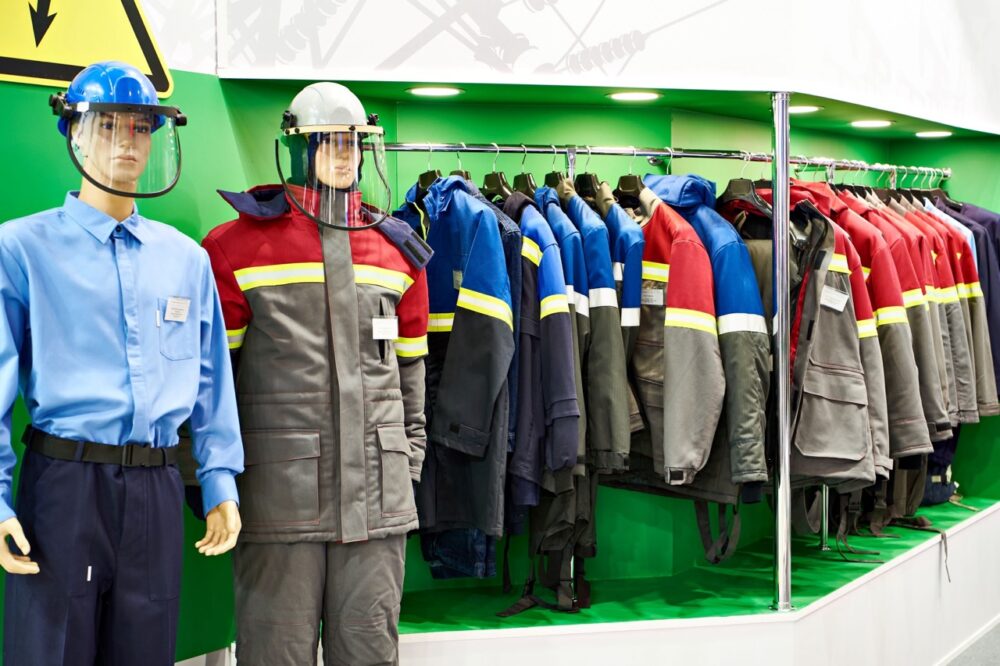When you think of workwear, you might picture sturdy uniforms or professional attire that’s both functional and reliable. But in today’s rapidly evolving world, work clothing is becoming so much more than that. Besides making you look professional, designers and manufacturers infuse sustainability, technology, and personalisation into every piece.
Let’s explore how various trends are shaping the future of workwear and why they matter to businesses and employees alike.

Current Trends in Workwear
Workwear is a practical necessity. However, it’s also becoming an extension of personal style and company identity. Modern designs now blend practicality with aesthetics, creating uniforms that look as good as they function. For example, industries like healthcare and construction are seeing a surge in tailored fits and ergonomic designs that allow for greater mobility and comfort.
Materials are also evolving. Lightweight fabrics with moisture-wicking properties are increasingly popular, especially in physically demanding jobs. These advanced features are available for individuals who prefer trendy or branded workwear.
Colours and patterns are also making a splash. Bright hues and reflective materials are being integrated into designs for visibility and safety. Even casual workplaces are embracing more dynamic dress codes, allowing employees to feel comfortable while maintaining a professional image.
Focus on Safety and Compliance
In some industries, compliance with regulatory standards is non-negotiable. Organisations like the Health and Safety Executive (HSE) set guidelines for protective gear, influencing everything from material selection to its design.
High-visibility vests, flame-resistant clothing, and anti-slip safety footwear are more advanced and widely available than ever before. These features aren’t just add-ons. They’re life-saving essentials for workers in industries like construction, oil and gas, and manufacturing. Workers are required to use a wide range of work clothing while using Data power tools or being exposed to potentially hazardous conditions.
Technological Advancements
Technology is transforming workwear in ways you might not have imagined. Take a look at these integrations, for example:
Smart Fabrics
Smart fabrics feature embedded sensors that can monitor everything from body temperature to posture. For jobs in hazardous environments, these features enhance safety by alerting wearers to potential dangers in real time.
Other Wearable Technologies
Wearable technology is also gaining traction. Think of gloves with built-in vibration sensors for machine operators or jackets equipped with a global positioning system (GPS) for outdoor workers. These innovations make your job not only safer but also more efficient.
Even fabric treatments are becoming high-tech. Stain-resistant, waterproof, and self-cleaning textiles are emerging, reducing the need for frequent washing and increasing the longevity of garments. The result? Less hassle for you and lower maintenance costs for businesses.
Customisation and Personalisation
Gone are the days of one-size-fits-all uniforms. Today, businesses are opting for custom workwear that reflects their brand identity while meeting team members’ needs. Modern uniforms not only carry your company’s logo but also incorporate colours and styles that align with your brand image.
Personalisation doesn’t just make you feel good during your working days. It also boosts morale. Employees who feel comfortable and confident in their attire are often more productive and engaged.

Sustainability in Workwear
You’ve probably noticed the growing emphasis on sustainability in fashion, and workwear is no exception. With environmental concerns at the forefront, companies are rethinking how they produce uniforms. Eco-friendly materials like organic cotton, recycled polyester, and even biodegradable fabrics are making their way into the industry.
A few brands are leading the charge with sustainable practices. Some use recycled materials in many of its workwear products, including safety boots and work trousers. Others have repair programs to extend the life of their clothing. These initiatives are not just good for the planet. They resonate with environmentally conscious consumers and employees who value ethical choices.
In addition, some are adopting circular business models, encouraging customers to return used uniforms for recycling or repurposing. This approach reduces waste and aligns with the growing demand for green solutions in every aspect of life.
The Role of E-commerce in Workwear Sales
The shift to online shopping is revolutionising how workwear is bought and sold. For you, this means more convenience and variety. Whether you’re a small business owner looking for your team’s work outfit or an individual searching for the perfect gear, e-commerce platforms offer a wealth of options at your fingertips.
Retailers are stepping up their game with virtual fitting tools, detailed product descriptions, and customer reviews. These features help you make informed decisions without stepping into a physical store. Plus, subscription models for workwear rentals or replacements are becoming popular, providing ongoing convenience for businesses.
Market Analysis and Future Predictions
The global workwear market is on the rise. Analysts predict a significant growth of 6.1% from 2021 to 2028, especially with the increasing demand in sectors like healthcare, construction, hospitality, and mining.
Looking ahead, you can expect even more innovation. Smart textiles will likely become standard, and sustainability will no longer be a trend but a requirement. Workwear may also become more inclusive, catering to diverse body types and cultural preferences.
As work environments continue to evolve—think remote workspaces, hybrid roles, and automation—workwear will adapt to meet these new demands. This evolution isn’t just exciting; it’s essential for keeping pace with a changing world.
Concluding Thoughts
Workwear is no longer just a tool for the job. It’s a reflection of progress, innovation, and responsibility. The industry is undergoing a remarkable transformation, integrating anything from sustainable materials to smart technology and personalised designs. As these trends continue to shape the future, businesses and employees alike will benefit from safer, more functional, and stylish options. So, whether you’re gearing up for a tough day on-site or dressing to impress in the office, the future of workwear promises to have you covered.

















